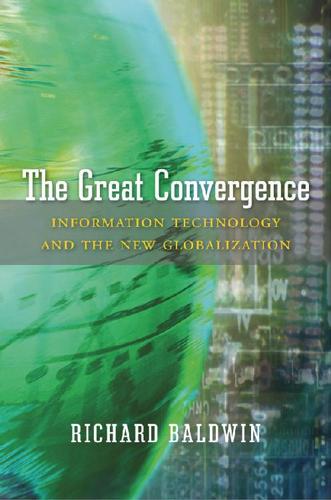
The Great Convergence: Information Technology and the New Globalization
by
Richard Baldwin
Published 14 Nov 2016
Because this high-tech, low-wage combination turned out to be a world beater, the easier movement of ideas sparked massive North-to-South flows of know-how. It is exactly these new knowledge flows that make the New Globalization so different from the Old Globalization. Curiously Concentrated Effects and the Commodity Super-Cycle Importantly, G7 firms own this know-how, so the new North-to-South knowledge movements should not be thought of as some enormous “Kumbaya moment.” Rich nations are not sending their know-how to poor nations in a burst of caring and sharing. G7 firms work hard to ensure that their offshored knowledge stays within the confines of their production networks.
…
While the second unbundling’s impact on industrialization was hyper-concentrated, the Great Convergence was a much broader phenomenon due to knock-on effects. About half of all humans live in the developing nations that are rapidly industrializing, so their rapid income growth created a booming demand for raw materials. Booming demand, in turn, created the “commodity super-cycle,” which subsequently sparked growth takeoffs in many commodity-exporting nations that were untouched by the emergence of global value chains. Globalization’s Next Big Thing: Globalization’s Third Unbundling The three-cascading-constraints narrative—which is summarized graphically in Figure 3—plainly admits the possibility of a third unbundling, if face-to-face costs plunge in the way coordination costs have since the 1990s.
…
In this way, the flows of knowledge that used to happen only inside G7 factories became a key player in globalization (light bulbs in bottom panel). These new information flows allowed a handful of developing nations to industrialize at a dizzying pace—resulting in a massive shift of industry from the North to the South. This Southern industrialization—together with the commodity super-cycle it launched—propelled emerging market income growth rates to unprecedented levels. The result was the “shocking share shift” shown in Figure 1. In a nutshell, this is how the ICT revolution transformed globalization and its impact on the world economy; up to 1990, globalization was mostly about goods crossing borders; now it is also about know-how crossing borders .
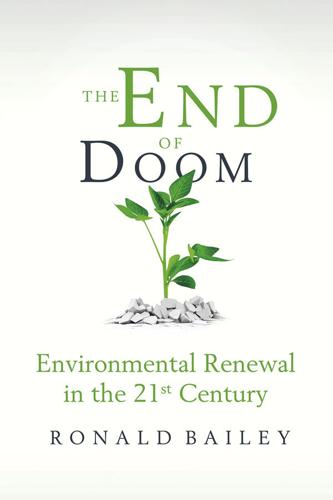
The End of Doom: Environmental Renewal in the Twenty-First Century
by
Ronald Bailey
Published 20 Jul 2015
The International Monetary Fund’s food price index has dropped from its 2011 high of 192 points to 147 points in February 2015, a fall of about 25 percent. Was this rapid run-up in prices a sign that the limits to growth were now upon us? Certainly many ideological environmentalists have interpreted the price spikes that way. Peak Commodity Super-Cycle? “The world is at, nearing, or past the points of peak production of a number of critical nonrenewable resources—including oil, natural gas, and coal, as well as many economically important minerals ranging from antimony to zinc,” warned prominent environmentalist Richard Heinberg in his 2010 article “Beyond the Limits to Growth.”
…
For example, in late 2013, Reuters polled twenty leading oil industry experts and obtained estimates for 2020 prices ranging from $70 to $160 per barrel. The International Energy Agency projects that the price of oil will be around $128 per barrel (2012 dollars) in 2035. In their analysis of commodity super-cycles, Erten and Ocampo report: “In contrast to these trends in non-oil commodity prices, real oil prices have experienced a long-term upward trend, which was only interrupted temporarily during some four decades of the twentieth century.” This suggests that the price of oil will not likely fall back to its 1998 average of $17 per barrel (2014 dollars).
…
Maugeri’s suggestion that oil prices could dip below $50 per barrel in the near term was realized in January 2015 when the price for benchmark West Texas Intermediate crude hovered around $45 per barrel, but he generally assumes that the price will remain above $70 in the run-up to 2020. Despite reassuring petroleum reserve estimates and the downward pressure on prices that increased production and the waning of the current commodity super-cycle generates, a peak oil crisis might still happen. How? Through political mismanagement. Political Peak Oil “The real problems concerning future oil production are above the surface, not beneath it, and relate to political decisions and geopolitical instability,” notes Maugeri. It is a disquieting fact that government-owned oil companies control nearly 90 percent of the world’s oil reserves and produce about 75 percent of current supplies.
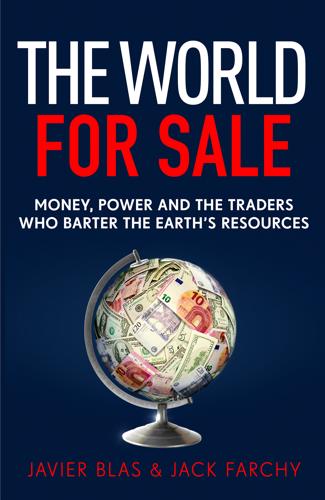
The World for Sale: Money, Power and the Traders Who Barter the Earth’s Resources
by
Javier Blas
and
Jack Farchy
Published 25 Feb 2021
China was the most important country to enter the commodity sweet spot, but not the only one. Across the world, many countries outside the industrialised nations of North America, Europe and Japan were reaching a level of economic development that required far more natural resources than before. The synchronised, resource-intensive growth created what economists call a commodity ‘supercycle’: an extended period during which the price of raw materials is well above its long-run trend, lasting beyond a normal business cycle, and often extending for decades. 10 A normal commodity price cycle, the result of a supply shock, such as a crop failure or a mine closure, tends to be short-lived: the rise in prices stimulates additional supply and cools demand, and the market rebalances.
…
The synchronised, resource-intensive growth created what economists call a commodity ‘supercycle’: an extended period during which the price of raw materials is well above its long-run trend, lasting beyond a normal business cycle, and often extending for decades. 10 A normal commodity price cycle, the result of a supply shock, such as a crop failure or a mine closure, tends to be short-lived: the rise in prices stimulates additional supply and cools demand, and the market rebalances. Supercycles are demand led, and last longer. They tend to coincide with periods of rapid industrialisation and urbanisation in the global economy. The first modern commodity supercycle, for example, was triggered by the industrial revolution in the nineteenth century in Europe and America; the second, by the global rearmament before the Second World War; the third, by the economic boom of the Pax Americana and the reconstruction of Europe and Japan in the late 1950s and early 1960s. The fourth began around the turn of the millennium, as China and other emerging economies entered the commodity sweet spot. 11 It fundamentally altered the structure of the global commodity markets.
…
He had little patience for his employees’ personal lives. And he quickly turned against people who he felt were no longer giving 100% to the Glencore cause. ‘Either you’re in the family or you’re out,’ says one former Glencore employee. ‘After I said I was leaving, Ivan didn’t speak to me again.’ 23 Years before the commodity supercycle started, Glasenberg had embarked on a series of trades that would transform the company’s fortunes, thanks to the rise of China. In 1994, when few in the natural resources world had any hope of higher prices, he started buying coal mines for Glencore. It was a new direction for the company, which until recently had focused on trading commodities rather than owning production assets.

The Price of Time: The Real Story of Interest
by
Edward Chancellor
Published 15 Aug 2022
In October of that year, several rare earths soared into the stratosphere after China imposed an export ban. To a large extent the commodity boom was driven by strong demand for raw materials from China, but bubbles also formed in precious metals (platinum, gold and silver) which emerging countries might have coveted but didn’t need for practical use. Wall Street hailed a ‘commodity super-cycle’ and urged investors to get exposure to this hot alternative asset. It would not have surprised Adam Smith to discover that real estate markets around the world reacted positively to the stimulus of ultra-low interest rates. From London to Sydney, residential property prices in the leading cities danced to the same monetary jig.3 As an executive at Savills, a property consultant, commented: ‘What happened was that, for the first time, the cost of money in most of the cities was similar – you might say quantitative easing [has] levelled the global playing field.’4 Real estate brokers referred to the favoured destinations of the world’s super-rich as ‘golden concrete’.5 In the United Kingdom, the country’s ‘housing crisis’ was generally ascribed to a lack of housebuilding.
…
Stanford economist Ronald McKinnon argued that the Arab Spring originated with ultra-low interest rates in the United States, which, as we have seen, drove capital flows into the emerging world and caused ‘overheating’ of the non-climate variety. China’s voracious demand for raw materials, in particular, stoked the ‘commodity super-cycle’.19 Easy money also stoked speculation in commodities, touted on Wall Street as a hot ‘alternative asset class’. McKinnon posed a tantalizing counterfactual: ‘If the Arab Spring had been recognized as mainly a food riot, the response of Western governments would have been more measured in taking sides, while focusing more actively on monetary measures to dampen cycles in primary commodity prices.’20 THE TAPER TANTRUM After the financial crisis, borrowers in developing countries took full advantage of the low rates available in the West.
…
To find a specific word or phrase from the index, please use the search feature of your ebook reader. 3G Capital, 161, 169 AEG (German company), 159 African American households, 211 AIG (insurance giant), 175, 221 Alberti, Leon Battista, 21 Alexander the Great, 12 Alibaba, 283 Altman, Edward, 223 Amazon (company), 203 AmeriCredit Corp, 167* Amsterdam, 35–6, 39, 47 Anbang Insurance, 285–6 Anderson, Benjamin, 87, 88, 90, 91, 92 Anglo-Dutch Wars, 33 annuities, 26, 69, 195, 197, 229 Antiphanes (Athenian playwright), 18 Antiphon (Greek orator), 20 Apple, 54, 149, 166, 176, 241 Aquinas, Thomas, Summa Theologica, 19, 25 Arab Spring (2011), xxiii, 255–6 Argentina, 79–80, 79*, 242–3, 263 aristocracy/landed classes: in Ancien Régime France, 49, 51; in ancient Mesopotamia, 200; and price of land, 34–5, 39, 42, 44 Aristotle, 9, 18, 19, 20, 28, 40 Arnd, Karl, 4 art market, 180, 208–9, 271 Artemis Capital, 231 Asian economic development model, 267, 278; Asian crisis, 114, 252, 278 asset price bubbles: before 2008 crisis, xxiii, 32, 44, 111–19, 204; and Arab Spring, 255–6; bond market in 2010s, 226; and Borio’s financial cycle, 132–3, 134, 135; bubble economy term, 184–7; Cantillon’s view, 58, 60–61; Chinese real-estate bubble, xxiii, 271, 272–4, 282, 288, 289; in commodities (from 2010), 173–4, 255–6, 257; construction booms, 62–3, 69, 74, 90, 112, 144, 148, 258–60, 273–9; crypto bubbles, 177–9; Dotcom bubble, 111–12, 136–7, 176, 204; Everything Bubble in post-crisis decade, 44, 138–9, 173–80, 180, 181–3, 185, 193–5, 206–10, 215, 306–9; expansive monetary policy as common feature, xxiii, 116*, 123, 135, 172–87, 180, 220; idea of creating a bubble to deal with, 113*; Japanese economy in 1980s, xxiii, 105–8, 145, 182, 184, 271, 273, 279, 285–6; misallocation of capital during, 43, 114, 148–50, 266–81, 289; relation to real economy, 182–3, 185, 237; stock market bubble in 1920s USA, xxiii, 87–91, 90*, 92–4, 96–8, 98*, 112, 203; at times of low inflation, xxiii, 134, 135; unstable bubbles in China, 270, 271–4, 282, 288; vast investment boom in China, xxiii, 128, 267–81, 280*, 282–9; and wealth illusion, 193–5 see also Mississippi bubble asset-backed securities, 175, 225, 226–7 Assyrian empire, 12 AT&T, 167, 168 Augsburg, 202 Augustus, Roman Emperor, 12, 15 Australia, 175, 192, 239 Austria, 93, 93*, 97, 261; Wörgl’s currency experiment, 243, 294 Austrian economists, 32, 94–6, 100, 108 see also Hayek, Friedrich; Schumpeter, Joseph Ayr Bank, collapse of (1772), 63 Azerbaijan, 262 Babylonia, 3–4, 5–8, 9–12, 13, 13, 14–15 Bacon, Francis (artist), 208 Bacon, Sir Francis, ‘On Usury’ (1612), 34, 35, 40, 43, 44 Bagehot, Walter, 62, 63–4, 66–8, 70–71, 72, 74, 149, 155, 251; Bagehot rule, xxiii, 74–6, 80; and dangers of foreign lending, 66, 77, 78; on foreign lending craze, 78; warnings over easy money, 64, 66, 67, 68, 69, 72, 78, 80–81, 220, 233; Lombard Street (1873), 69, 74, 75, 76, 81 Bain Capital, 163 Balding, Christopher, 277* Bank for International Settlements (BIS), 11, 101, 107, 113–14, 131–4, 135–9, 144, 153, 168, 261 Bank of Amsterdam (Wisselbank), 47, 68 Bank of England: during 1920s, 82–3, 85–6, 92, 93; acquires foreign corporate securities (2016), 241†; Bagehot on role of, xxiii, 64, 66, 74, 75–6; Bank Charter Act (1844), 75–6, 76*; ‘corset’ in Bretton Woods era, 291; ‘credit easing’ policy, 242; dominion over credit markets, 292–3, 293*; and financialization, 168; founding of (1694), 47; and Gold Standard, 85, 251; inflation targeting, 119, 121, 241; as lender of last resort, 66, 74–6, 80; nationalization (1946), 172; NICE (non-inflationary consistent expansion), 112; in nineteenth-century, 42, 65, 66, 70, 71–2, 75–6, 79, 80; policies in post-crisis decade, 151, 153, 174, 233, 235, 241, 293; and regulation, 232, 233; and secular stagnation narratives, 126, 205–6 Bank of France, 82, 83, 92, 93 Bank of Japan (BOJ), 105–8, 119, 122, 146, 192, 224, 241, 242, 244–5, 271, 294 Bank of Spain, 117 banking: 1825 crisis, 64–7, 75; back-alley banking in China, 281–3; bankers as unpopular, 18; Casa di San Giorgio, Genoa, 47–8; development in Middle Ages, 22–4, 35; expansion in Britain during Napoleonic Wars, 69–70; and fountain-pen money, xxiv, 42, 269, 312; Law establishes General Bank (1716), 49–50; merchant banks in ancient world, 7, 8; National Banking System in USA, 157; ‘net interest margin’ eroded by ultra-low rates, 136; pre-twentieth-century panics/crises, 63, 64–8, 69, 70, 72–6, 79–81; repo market, 236*, 239, 245; UK and US economies shift towards, 167–8; vast expansion in China, 265–6; and zombification, 147, 148 see also financial sector Baoding Tianwei Group, 280 Baoshang Bank, 285 Baradaran, Mehrsa, 215* Barbon, Nicholas, 15 Barcelona, 23 Baring, Alexander, 65 Baring, Sir Francis, 74–5, 76 Baring Brothers, 74, 76, 80 Basel Committee, 232 basketball, shot clock, 141 Bastiat, Frédéric, xvii, xviii–xx, xxi, xxii, xxv, 9, 188–9, 215, 306 Batista, Eike, 257, 258 Bavarian Soviet Republic, 243 Bayer (German firm), 225 Bear Stearns, 175 behavioural research, 29 Belgium, 225 Benda, Julien, La Trahison des Clercs (1927), 297 Bentham, Jeremy, 30, 189 Berkshire Hathaway, 161 Berlusconi, Silvio, 293 Bernanke, Ben: actions during 2008 crisis, 76, 253–4; on causes of 2008 crisis, 114, 115–16, 118, 128–9; and easy money before 2008 crisis, 111–12, 113, 115–17, 115†, 118–19; evades consequences for 2008 crisis, 119; and inflation targeting, 119, 119*, 241; joins Federal Reserve (2002), 111–12; and legacy of John Law, 61; on monetary policy, 98, 98*, 115, 115*, 131, 155, 207, 230, 238; policy of dealing with aftermath of bubbles, 111–12, 114; and savings glut hypothesis, 128–9, 191; and taper tantrum (June 2013), 239, 256–7, 259, 263; and ultra-easy money after 2008 crisis, 124, 131, 133, 137–8, 153, 155, 181–3, 207, 215, 230, 238–40, 243–4, 262; view of Great Depression, 98, 98*, 99, 100, 101 Bernard, Samuel, 55* Bernardino of Siena, 25 Bernstein, Richard, 306 Bernstein, William, 128 Beyond Meat, 177 Bezos, Jeff, 203 bills of exchange, 22, 23, 24, 47, 50, 65‡, 71, 130 Bitcoin, 177–9, 307–8 BlackRock, 209, 227, 246 Blackstone Sir William, Commentaries on the Laws of England (1765), 17 BNP Paribas, 253† Bo Xilai, 288 Böhm-Bawerk, Eugen von, xxiii–xxiv, xxv, xxvi*, 13, 16, 19*, 29, 30, 31, 95, 246 Borio, Claudio, 132–4, 135–9, 153, 232–3, 240, 262–3, 269, 311 Borman, Frank, 143 bottomry loans, 6, 26 Bouazizi, Mohamed, 255 Bourbon, Duke of, 55 Brandeis, Justice Louis, 156, 158, 159, 202 Branson, Richard, 213 Braudel, Fernand, 21 Brazil, xxiii, 225, 254–5, 257–8, 291 Bretton Woods system, 133, 251, 290–91, 302 Bridgewater Associates, 229 Britain: 1825 banking crisis, 64–7, 75; building boom in mid-eighteenth-century, 62–3; calamities of 1660s, 33; decision to leave EU, 187, 241, 262; default on sovereign debt (1672), 33, 38; early twentieth century monopolies in, 159; economy in Bretton Woods era, 291, 302*; financial repression today, 292–3; foreign lending manias (1860s-80s), 77–8, 79–80; housing affordability crisis in, 212–13; loss of manufacturing jobs to China, 261*; low economic vitality in post-crisis decade, 124, 150–51, 153, 192; post-1571 debates on excessively high rates, 34–44; Productive Finance Working Group, 293, 293*; railway mania of 1840s, 70–72, 73; return to the Gold Standard (1920s), 43, 82, 85, 86; reversal of global capital flows (late-1920s), 93; Revolutionary/Napoleonic Wars, 41–2, 69–70; shift from manufacturing towards services, 167–8; South Sea Bubble (1720), 69; trade cycle from early eighteenth century, 62–4; usury in, 24, 26, 27, 34, 40, 42, 65‡, 65; zombification in, 146 see also Bank of England British Association of Recovery Professionals, 146 British Home Stores (BHS), 196–7 Brown, Brendan, 218 Brown, Gordon, 112 Brunnermeier, Markus, 236 Bryan, William Jennings, 99 bubble economy term, 184–7 Buchan, James, 54, 56*, 59 Buenos Aires Water Supply and Drainage Company, 80 Buffett, Warren, 126, 161, 225, 307, 308, 308* Bullard, James, 239 Burry, Michael, 198 buyout firms, 160–63, 183†, 204, 207, 222, 223, 237 Byzantium, 25 Calvin, John, 26 Campbell, Donald, 120–21 Canada, 119, 174–5, 192, 196*, 241 Canterbury, Justin Welby, Archbishop of, 17, 201 Cantillon, Richard, 58, 60–61, 60* capital flows, global: in 1920s, 82, 91, 261; Bretton Woods capital controls, 291; capital controls return after 2008, 262, 291; ‘commodity super-cycle (from 2010), 173–4, 255–6, 257; cross-border lending in Eurozone, 144–5; and Dollar Standard, 251–2, 253, 261, 262–3; foreign lending manias (1860s-80s), 77–8, 79–80, 79†; ‘global banking glut’ notion, 132, 252–3; global credit bubble in early 2000s, 252–3, 261; international carry trade, 137, 237–8, 252, 253–4, 256–7, 258; ‘persistent expansion bias’ of monetary system, 262; post-crisis flows into emerging markets, xxiii, 253–9, 262–3; protectionism of 1930s, 261–2; recirculation of in run-up to 2008 crisis, 115‡; recording/measuring of, 137; reversals of, 63, 93, 93*, 261; and role of interest, 139, 251–7, 259–61, 262–3; ‘second phase of global liquidity’ after 2008 crisis, 253–9, 262–3; taper tantrum (June 2013), xxiii, 137, 239, 256–7, 259, 263; Turkish debt, 258–60; and US interest rates, 137, 251–5, 256–7, 259–61, 262–3, 285 capitalism: Bastiat on broad consequences of actions, xix–xx; capital defined, 28, 28*; distortions/disruptions by unicorns, 148–50; distrust of in 1930s, 299; Hayek on, 96, 295–6, 298; Hazlitt on price system, xx; interest rates as at heart of, xxii, xxv, 16, 28, 141, 297; low marginal costs in New Economy, 127–8; Marxist-Leninist critique of, 159–60, 217*, 298; primacy of finance in modern era, 138–9; process of ‘creative destruction’, xx, 140–43, 143*, 153, 296–7; Proudhon on, xvii; role of risk in, 220, 298; Schumpeter on, 140, 153, 296–7; Adam Smith on mutual self-interest, 27–8; state capitalism, 280, 284, 292–5, 297, 298; takes off in medieval Italy, 21–3, 23 Cappadocia, 12 Carillion (construction company), 197 Carnegie, Andrew, 157–8 Carney, Mark, 235 Carroll, Lewis, 309, 311 carry trading, 220–22, 227, 229, 233, 234, 236; international, 137, 237–8, 252, 253–5, 256–7, 258; new regime emerges after 2008 crisis, 221–4, 253–5, 256–7, 258 cars, 173, 179, 210, 220; manufacture of, 142, 166–7, 176–7, 261; and revival of subprime market, 215, 224 Carstens, Agustín, 214* Carter, Jimmy, 108–9 Case, Anne, 213 Cassel, Gustav, xxvi, 36*, 88, 190, 192, 195, 246 Catholic church, 18–19, 23–4, 25–6 central banks: attitudes to risk, 230–31; Bagehot rule, xxiii, 74–6, 80; direct involvement in stock market, 172–3, 241–2, 293–4; dominion over credit markets, xxii, 292–3, 293*; double standards in approach to bail outs, 215; and duration risk, 225; fuelling of asset price bubbles by, 43, 60–61, 88, 110, 113, 115–16, 118–19, 132–6, 174–6, 181–2, 185, 194–5; goal of stable price level, xxiii, 42, 86–8, 94, 96–8, 105–8, 109–13, 133, 203; influence on long-term rates, 133, 134–5; issuing of ‘fiat money’, xxiv, 13, 312; Long Island meeting (1927), 82–3, 88, 92; and March 2020 crash, 305–6; money supply targets in 1980s, 121; move to ‘active’ monetary policy in 1920s, 84, 85–8, 85†, 92–4, 96–8; and responsibility for inequality, 214–17; ‘Taylor Rule’, 116–17 see also quantitative easing and also entries for individual institutions central planning: in Bretton Woods era, 291, 292–5; Hayek’s The Road to Serfdom (1944), 295–6, 298; and misallocation of capital, 264, 266, 269; and problem of regulation, 232–3; reappearance of, 297, 298, 302; during Second World War, 295, 302, 311; and ‘tyranny of metrics’, 120* da Certaldo, Paolo, 21 Chamberlain, Austen, 86 Chamberlen, Hugh, 59* Chan, Melissa, 274 Chang Ying, Remarks on a Regular Livelihood, 265 Chapman, D.
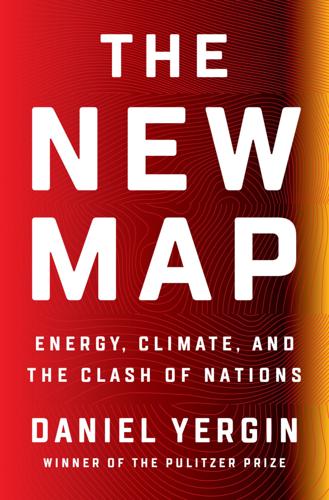
The New Map: Energy, Climate, and the Clash of Nations
by
Daniel Yergin
Published 14 Sep 2020
How could one think otherwise? In June 2012, a major international bank convened its annual conference for hedge funds and other investors at a bucolic conference center called The Grove outside London. On the panel on “Natural Resources and the Commodity Supercycle,” CEOs of the world’s largest mining companies absolutely agreed—no end was in sight; the commodity supercycle could only continue and prices would continue to rise; and therefore their companies would continue to add capacity, buy assets, and spend ever-larger sums of money. Yet by that time the supercycle was already ending. Economic growth in the BRICs was slowing, and that meant a slowing in the growth of consumption of oil and other commodities.
…
Between 2003 and 2013, China’s economy grew more than two and a half times over; India’s more than doubled. The world economy grew by just 30 percent, the United States by 17 percent, Europe by 11 percent, and Japan just 8 percent. This BRIC era was characterized by what became known as the “commodity supercycle”—high and rising prices for oil, copper, iron ore, and other commodities driven by strong economic growth in those countries. During the BRIC era, it was this growth in demand, particularly from China, that became the defining factor for the world oil market. In response to the supercycle and rising commodity prices, companies dramatically stepped up their investments to produce more commodities.
…
As oil and gas revenues mounted, Russia went from economic weakness to strength, paying off international debts, raising wages and living standards, increasing pensions, saving money in “stabilization” funds, spending more on defense, and financing its restoration as a great power. Russia was a major beneficiary of the commodity supercycle in the BRIC era and the strong demand from emerging market countries that defined it. More than anything, that meant China and its fevered economic growth. A deputy prime minister, in his office on Old Square in Moscow, was once asked about what was going to happen in Russia’s economy. He gestured toward the window and pointed to the east.
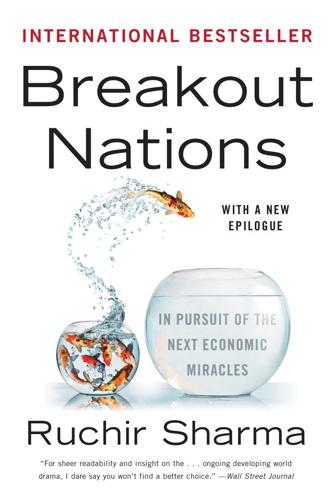
Breakout Nations: In Pursuit of the Next Economic Miracles
by
Ruchir Sharma
Published 8 Apr 2012
Most of the illusions that defined the last decade—the notion that global growth had moved to a permanently higher plane, the hope that the Fed (or any central bank) could iron out the highs and lows of the business cycle—are indeed spent. Yet one idea still has the power to capture the imagination of the markets: that the inexorable rise of China and other big developing economies will continue to drive a “commodity supercycle,” a prolonged upward rise in the prices of commodities ranging from oil to copper and silver, to textiles, to corn and soybeans. This conviction is the main reason for the optimism about the prospects of the many countries that live off commodity exports, from Brazil to Argentina, and Australia to Canada.
…
However, Canada didn’t benefit as much as Australia did from the recent boom in emerging markets, in part because it trades more with the developed world. Canada also saw no increase in productivity growth, a sluggish trait typical of many commodity-rich countries, and a major reason why it is not likely to enjoy an American-style manufacturing revival. These rich commodity economies have run out of luck as the commodity supercycle has ebbed. The latest figures on industrial production also show very clearly that the growth paths of economies across the globe are starting to part ways, with clearer winners and losers. In Europe, as in the emerging markets, investors are beginning to think more carefully about individual storylines: through the first six months of 2011, the gap between the best- and the worst-performing European stock markets was 26 percentage points, but over the first nine months of 2012 that gap has climbed back up to 51 percentage points, with the Belgian markets up 28 percent and the Greek markets down 23 percent.
…
., 49 Cinnamon Lodge resort, 196 Citibank, 91 Ciudad Juárez, 79 Clinton, Bill, 225–26 CLSA, 238 CNBC, 70–71 coal, 133, 135, 170, 180, 225 Coca-Cola, 75 coffee, 67, 69, 232 Cold War, 86, 87, 134 Coleman, 247 college endowments, viii Collor de Mello, Fernando, 66 Colombo, 191, 192 Commission on Growth and Development, 235 “commodity.com” illusion, 223–39 “commodity supercycle,” 223 Commonwealth Games, 42 Communism, 4, 21–22, 25, 26–30, 83, 84, 85, 86, 89, 97, 102, 103, 104, 111, 117, 170, 175, 199–200, 202–3, 247 computers, 158, 164, 203–4, 236–39 Confucianism, 199 conglomerates, 125–26, 134, 138, 161–63, 167–69, 178 Congo, Democratic Republic of, 205, 209 Congo, Republic of, 4 Congress of South African Trade Unions (COSATU), 175, 181 Congress Party, 39, 41–42, 47–49, 55–56, 174, 176 conspicuous consumption, 6 construction industry, 123, 166, 213 consumer electronics, 147–48 consumer prices, 6, 12, 16, 18, 22–23, 24, 25, 31–32, 38, 39, 42, 49, 52–54, 57, 59–61, 62, 66, 67–68, 71, 75–76, 83–84, 86, 87, 94, 121, 126, 137–38, 157, 179, 232, 235 container vessels, 200–201 contracts, labor, 17 Coolidge, Calvin, 39 copper, 19, 120, 141, 223, 224, 229, 231 Cornerstone Analytics, 227 corporate governance, 134 corporate taxes, 63, 76, 126–27, 214–15, 254 corruption, 25, 76–77, 89, 91, 93, 107, 117–18, 134–35, 137, 151, 204–5, 206, 209, 210, 217 see also graft counterrevolution, 111, 118, 125–26 creative destruction, 46 credit, 8, 32, 38, 42, 43–44, 45, 46–47, 49–51, 58, 150, 157, 202 credit cards, 8, 157 Credit Suisse, 50 crime rate, 71, 78, 181, 211 “crony capitalism,” 10, 25, 38, 42, 46–47, 49, 50–51, 58, 131, 139 Cuba, 191 cuisine, 52–53 currencies, 4–5, 9, 12, 13–14, 26, 28, 32–33, 59–61, 62, 66, 67, 68–69, 73, 80, 92–93, 100–108, 115, 120, 131, 132, 146–47, 149, 159–60, 178, 179, 196, 209, 232, 233, 243, 246–47, 254 “czarist mentality,” 96 Czech Republic: auto industry of, 103 banking in, 103, 105–7 as breakout nation, 99–100 currency of (koruna), 108 as emerging market, 106, 110 as Eurozone candidate, 11, 99–100, 106–8, 109, 254 GDP of, 100 growth rate of, 97, 99–104, 244–45 inflation rate of, 249 national debt of, 105–6 population of, 106 post-Communist era of, 97, 102, 104, 111 Dae Jang Geum, 167 Daewoo, 160, 162 day traders, 220, 224 debt, national, 4, 5–6, 8, 17, 18, 24, 57, 61–62, 66, 76, 80–81, 85, 86, 92–93, 100, 105–6, 119–22, 134–35, 170, 176, 177, 231, 252 debt, personal, 8, 57–58, 157, 182–83 defaults, 61–62, 66, 252–53 deficits, x, 109–10, 147, 254 Delhi, vii–viii, 43 Dell, 158 democracy, 29–30, 48–49, 50, 55–56, 58, 77, 89, 96, 114, 118, 119, 123, 127, 143, 156, 173–76, 194, 205 Democratic Alliance Party, 175–76 Democratic Republic of Congo, see Congo, Democratic Republic of “demographic dividend,” 37–38, 55–56, 58, 126 demographics, 17–18, 21–22, 37–38, 55–56, 58, 126, 225, 231–32 Deng Xiaoping, 8–9, 17, 25, 26–28, 199, 200–201 dependency ratio, 37–38 Detroit, 162 devaluations, currency, 62, 108, 132 developing countries, vii–x, 2, 7, 10–16, 20, 28, 38–39, 42, 44, 49, 61, 65, 68, 89–90, 113, 123, 158, 184–91, 204–8, 233–39, 242–4 commodity exports of, 204, 223–39 see also breakout nations diamonds, 176, 205 dictatorships, 29–30, 127, 173, 246 Disney, 3 DMK, 48 Dogus family, 125 dollar, 7, 13–14, 18, 32–33, 59, 67, 70, 73, 103, 131, 132, 232, 233, 234, 243 “domestic content” rules, 213 Domino’s Pizza, 53 dotcom bubble, 3, 6, 157, 164, 189, 223–24, 225, 227, 230 Dow Jones Industrial Average, 9, 47 dowries, 145 “Dr.

A Wealth of Common Sense: Why Simplicity Trumps Complexity in Any Investment Plan
by
Ben Carlson
Published 14 May 2015
Investors need to understand themselves to be able choose wisely among the assets they include in a portfolio. Myth 11: Commodities Are a Good Long-Term Investment Want to know the best way to find your way into a financial advisor's asset allocation model? Exhibit supremely strong performance over the most recent period. Case in point is the mid-2000s commodities super-cycle that caused many investors to consider an allocation to commodities. Most diversified baskets of commodities more than doubled in value in the 2001 to 2007 period. Precious metals equities—the stocks of the companies that extract these commodities for use—were up an astonishing 615 percent.
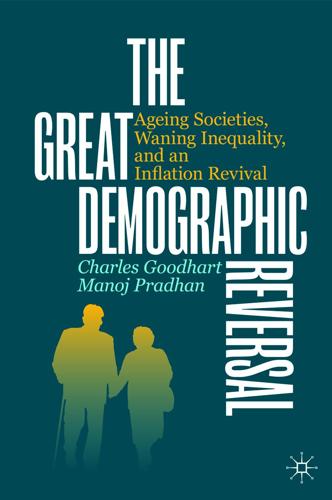
The Great Demographic Reversal: Ageing Societies, Waning Inequality, and an Inflation Revival
by
Charles Goodhart
and
Manoj Pradhan
Published 8 Aug 2020
A second set of events were the treaties that further integrated China into the global economy: WTO accession and US Congressional approval for PNTR (Permanent Normal Trade Relations, the equivalent of Most Favoured Nation) status for China, both in 2000. The time between China gaining WTO membership and the global financing crisis finally cemented China’s position in the world as an economic, and hence political, superpower. The strength of the global economy, the euphoria around the ‘commodity supercycle’ and emerging markets, and praise for the benefits of globalisation were all derivatives to varying extents of China’s expansion over that period. China became a WTO member after 14 years of negotiations. Its accession was granted conditional upon a long list of liberalisation and opening-up measures (set mostly by the US) to allow greater access to, and see greater transparency in, China’s markets.
…
Canada Cancer Capital Capital account Capital account liberalisation Capital accumulation Capital Adequacy Ratios (CARs) Capital control Capital costs, falling Capital flows, uphill Capital inflows Capitalism, ‘substantially broken’ Capitalist class Capitalist economies, governance problems Capitalist heaven Capital, misallocation of Capital, returns to Capital-labour Capital-labour ratios Capital misallocation Capital per worker in Japanese manufacturing, rising Capital stock Carbon tax Care, eligibility criteria for public funding Care homes Care(rs) Carers, cost of support by ‘Care Supplement’ Care workers Care workers, need for increase in Japan Caribbean Caring expenses, rising Caring services, hard to raise productivity Cash, abolition of Cash flow Cavendish, Camilla, Extra Time The Cavendish Review CBO Report Centenarians, high risk of dementia Central Bank Central Bank Independence (CBI) Central Bank Independence, a ‘paper tiger’ Central Bank Independence, a surety of financial rectitude Central Bank Independence, its glory years Central Bank Independence, populist backlash against Central Bank Independence, under threat Central banks, best friends of Ministers of Finance Central banks, constraints on raising interest rates Central banks, create money Central banks, inflation targets of Central banks, recently best friends of Ministers of Finance Central banks, reverting to normal policies Central bank inflation target Central Bank targets Certificate of Fundamental Care Changing life cycle Cheap labour Chief Executive Officer (CEO) Chief Executive Officer, has information and power Chief officers Child rearing, age of delayed Children Children, age of having Children, staying at home longer Chile China China’s ascent China’s ascent, benefiting AEs China, absence of welfare state China, administration China, ageing population China, ascent in 1990s China, bank deposits of China, big four state-owned banks China, capable of debt cancelation China, continuing strong investment China, corporate debt with lower risk of default China, credit growth unsustainable China, current account balance declining China, current account surplus peak China, debt conversion into equity China, debt is misguided the conventional wisdom China, debt less likely to lead to a crisis China, demographic reversal China, developed coastal regions of China, early stage of development China, educated labour force China, entry of foreign banks China, excess capacity China, financial markets China, focus on raising productivity China, growth decline China, growth decline in 2018/19 China, high personal sector saving China, internal migration, dominated by Eastern Region China, investment ratio China, labour force dynamics changing direction China, land subsidized China, leverage ratio China, low interest rates as a tax on households China, manufacturing sector China, no longer a deflationary force China, one child policy China, past contribution to global growth China population China, property sector China, rapidly ageing population China, remarkable demographic dynamics China, shrinking workforce China, social safety net insufficient China, special economic zones China, surging credit growth China, trade balance with USA China, under-developed interior regions China, unit labour costs China, upgrading technology China, urban savings reduced as interest rates fall China, WTO membership after long negotiations Chinese bonds Chinese elderly care Chinese, more than Americans Chinese seniors Civil Service Climate change Cognitive decline, a common story Cognitive impairment Colombia Commodity price Commodity price shocks Commodity prices, rising Commodity producers Commodity supercycle Communism The Communist Manifesto See alsoEngels, Friedrich; Marx, Karl Communist Party Comparative bargaining power Compertpay, R. Concentration Concentration and monopoly power Concentration, increasing Concentration in markets, caused by low interest rates Conesa, J.C.
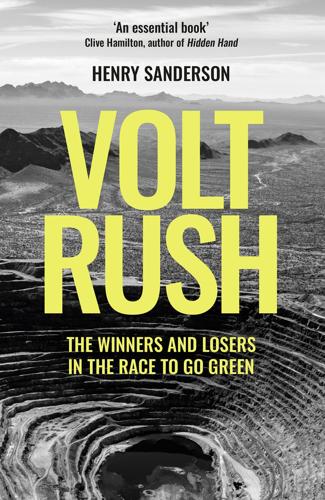
Volt Rush: The Winners and Losers in the Race to Go Green
by
Henry Sanderson
Published 12 Sep 2022
Iron ore, the rock that contains naturally occurring iron, is a key ingredient for steel production, along with coal. And putting steel rods into concrete makes a perfect construction material. As China built ever more apartment buildings and new cities at the beginning of the twentieth century its demand led to an upswing in prices that was dubbed a commodity ‘supercycle’.* China turned into one giant construction site that needed feeding with raw materials. In turn, Australia became one giant mine, digging up and shipping minerals to China. With iron ore prices sky-high, any amount of spending justified getting another tonne out of the ground, and so spending ballooned.
…
Hoover had gone to the goldfields in his early twenties and helped turn around the Gwalia mine, making the fortune that would help him become president.8 Brinsden continued the family tradition and studied at the Western Australian School of Mines at Curtin University in the early 1990s before going to work for a number of gold mines. He joined iron ore miner Atlas Iron in 2006, just as the Chinese-driven commodity supercycle was getting started. In 2015 he was introduced to Biddle who told him that lithium was interesting and that the market had ‘got to be heading in the right direction’. It has got to be better than iron ore, Brinsden thought. At the time he joined Pilbara it was a penny stock. But he needed to find financing to build the mine.
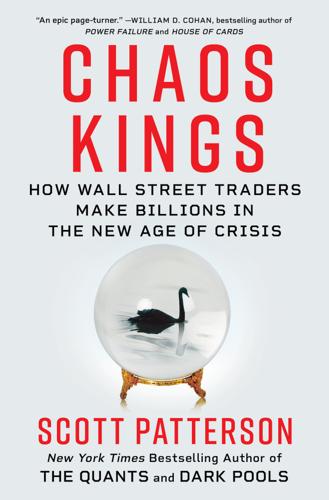
Chaos Kings: How Wall Street Traders Make Billions in the New Age of Crisis
by
Scott Patterson
Published 5 Jun 2023
Runaway inflation didn’t take off the way many expected. There were some periodic bouts of price spikes, but they were usually short-lived or confined to certain fast-growing economies and China, whose seemingly unstoppable 10-percent-a-year growth—and all the demand that came with it—triggered a so-called commodity super cycle that sent prices for metals such as copper, steel, and iron into record territory. One argument for why inflation remained largely under wraps was that the Global Financial Crisis was caused by the collapse of the financial system, rather than weakness in other parts of the economy, like manufacturing.
…
The results were hard to parse. Cotton had tumbled more than 10 percent after a sharp increase, but the indicators implied that it remained in a bubble. And indeed it did—over the next year cotton surged 300 percent, along with a host of other commodities in what economists took to calling a commodity super-cycle largely based on insatiable demand from China. (Sornette, in a paper detailing his results, said cotton “was and still is in a bubble without showing a clear change of regime.”) Gold also continued to ramp higher after its short-lived decline. It seemed Sornette’s system had indeed identified some bubbles, but failed to accurately predict when they would pop.
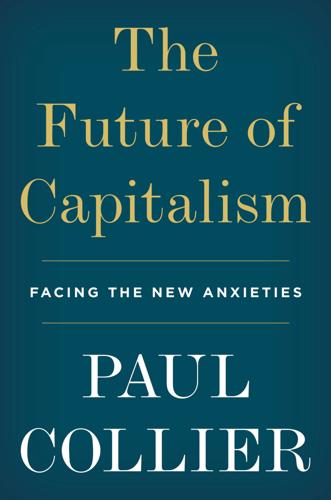
The Future of Capitalism: Facing the New Anxieties
by
Paul Collier
Published 4 Dec 2018
The global boom in commodity prices of 2000–2013 appeared at the time to be powering Africa and the Middle East forward, but this now looks doubtful. Remarkable new global data has collated comprehensive measures of national wealth per capita, including not only the conventional components such as the capital stock, but education and natural wealth as well.1 The data provides two snapshots – 1995 and 2014 – fortuitously spanning the commodity super-cycle. From it, we can see whether the unprecedented temporary increase in the natural resource earnings of many poor countries has led to gains that can be sustained. What it reveals is that the poorest countries fell further behind everyone else. Not just the absolute increase, but the percentage increase in per capita wealth was much less in the low-income countries than in all other income groups, and in much of Africa wealth actually fell.
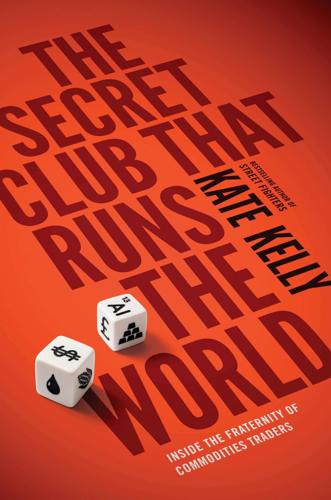
The Secret Club That Runs the World: Inside the Fraternity of Commodity Traders
by
Kate Kelly
Published 2 Jun 2014
“It’s not so much that the commodities story itself is over,” he said after the London meeting, “as it is that the other asset classes,” or groups of investment instruments, like stocks or bonds, “have a better outlook.” Currie had prepared a chart showing that the era of cash, oil, and gold as favored trades had effectively ended. Despite the commodity supercycle, a theory still being thrown around at the time that argued for a protracted period of high commodity prices, he felt that the potential for returns was now far better in stocks. During the 2000s, as commodities were raging toward their all-time high, stocks were up only slightly. But the Fed’s easy-money policies, the centerpiece of which was a recurring $85 billion monthly asset-purchasing program intended to stimulate the economy, had helped the stock market recover from the financial crisis.
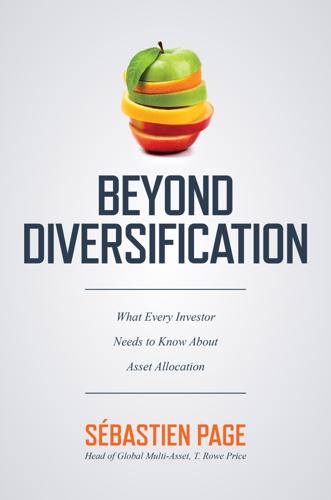
Beyond Diversification: What Every Investor Needs to Know About Asset Allocation
by
Sebastien Page
Published 4 Nov 2020
In a 2017 article published in the Financial Times, “Emerging Market Assets Are Trapped by an Outdated Cliché,” Jonathan Wheatley says: [In] November 2014, . . . the weight of technology stocks in the benchmark MSCI EM equities index overtook the weight of energy and materials—the commodities stocks that many see as emblematic of emerging markets. This transformation has been dramatic. When the commodities supercycle was in full swing, in mid 2008, energy and materials accounted for more than a third of MSCI EM market capitalisation and tech companies just a tenth. Last month, the commodities group was barely an eighth of EM market cap, and tech companies more than a quarter. This should be no surprise.

The Innovation Illusion: How So Little Is Created by So Many Working So Hard
by
Fredrik Erixon
and
Bjorn Weigel
Published 3 Oct 2016
Having declined by 88 percent since its peak in 2010, it seemed to validate those who had derided BRIC as a Bloody Ridiculous Investment Concept.5 The continental economic awakening in Asia is no doubt real, but the BRIC fantasy neglected a simple lesson of economic history: high-growth eras always come to an end. It is much easier to play economic catch-up than to compete at the frontier of innovation and productivity. Contrast the image of the roaring BRIC countries with current economic realities. Brazil and Russia are hardly inspiring growth examples now that the commodity supercycle has petered out. Both countries have had periods of sustained negative growth in recent years, impoverishing the population. In the case of Russia, geopolitics, nostalgia, and delusions of grandeur have taken priority over economic policy and invited severe economic mismanagement. So there is no longer a B and an R in the BRIC chimera, if there ever was.

The Future Is Asian
by
Parag Khanna
Published 5 Feb 2019
Although the Soviets backed Marxist revolutionary parties in Angola and Sudan and Chairman Mao pledged China’s solidarity with fellow developing nations, ultimately Great Britain, France, and the United States dictated Africa’s fortunes. Since the early 2000s, however, Africa has rapidly reoriented toward Asia. The most salient driver of this shift was the commodities supercycle of 2002–2012, during which trade between Asia and Africa grew by nearly 2,000 percent (yes, 2,000 percent). During that time, nearly half the world’s fastest-growing economies were in Africa. Africans would be much worse off today if Europe had remained their only major destination for food exports.
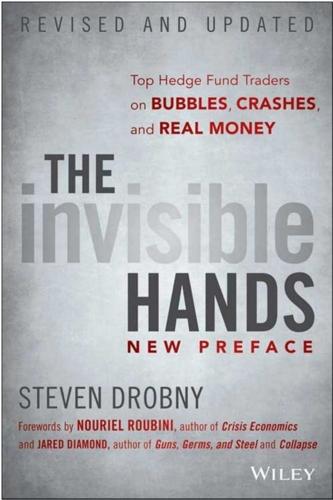
The Invisible Hands: Top Hedge Fund Traders on Bubbles, Crashes, and Real Money
by
Steven Drobny
Published 18 Mar 2010
Even though we are in a general strong upward trend in commodity prices, interim volatility can be huge, as we saw in the second half of 2008. Commodity Super Cycle The Commodity Super Cycle is an economic theory based on demographic trends and the resultant effect on demand for basic commodities. According to the theory, it is generally believed that by 2050, the global population is expected to number 9.1 billion people, assuming declining fertility rates. Finite raw materials, coupled with an increasing population base, will translate into higher prices. Over the past decade, Jim Rogers (Inside the House of Money, Chapter 11) has become one of the best-known advocates of the “Commodity Super Cycle” theory. According to Rogers, the twentieth century has seen three secular bull markets in commodities (1906-1923, 1933-1955, 1968-1982).
…
I knew from that initial conversation that he understood how to construct great risk-versus-reward trades and would be a moneymaker, which has proven correct. Nearly two years later, I sat down with the Commodity Trader again at a mahogany table in an art-adorned conference room in his high tech offices, where currently he presides over one of the largest commodity hedge funds in the world. He is a firm believer in the commodity super cycle, and spends a great deal of time thinking about the second-order effects on other markets and products. He says that pension funds and other real money investors have an economic reason to invest in commodities as an inflation hedge, but the devil is in the details. It’s all about how you construct the trade.
…
When structuring a trade in an industrial commodity, you can make reasonable assumptions on supply, but the economic cycles have been so violent in recent years that they have been an even bigger driver of commodity prices than the underlying supply cycles for example. The volatility during 2008 and 2009 reminds me of the 1997-1998 period (see Figure 8.1). Back then, the Asia crisis and the collapse of emerging markets caused a massive sell-off in commodities. It looked like the commodity super cycle that people even back then had been talking about for so long was off the table. It looked as if it was going to take years for some of the emerging market countries to pay back the IMF for their loans, creating a strong headwind to a commodity price recovery and an environment of extreme bearishness.

The Rise and Fall of Nations: Forces of Change in the Post-Crisis World
by
Ruchir Sharma
Published 5 Jun 2016
Instead, it collapsed at the end of the 1980s. By then forecasters had handed the next century to Japan, but it became the next economic star to falter. None of that prevented a new round of excitement in the early 2000s, focused on the rise of the BRICs, or BRICS (some included South Africa in the group), and the commodity super cycle. As the hype was peaking around 2010, the historical pattern for commodity prices—which tend to boom for a decade, then fall for two decades—was about to reassert itself. Today talk of these nations fulfilling their destinies as regional economic powerhouses seems like a dim memory. Recognizing that this world is impermanent leads to the second principle, which is to never forecast economic trends too far into the future.
…
Sharma, Ruchir. “The Oil Shock with No Pain.” Newsweek, October 31, 2005. ——. “Cracking Inflation Should Be India’s Priority.” Financial Times, December 8, 2013. Stephens, Bret. “Book Review: ‘The Myth of America’s Decline,’ by Josef Joffe.” Wall Street Journal, November 6, 2013. Ward, Justin. “Commodity Super Cycle Analysis.” Wells Fargo Research, January 15, 2015. Warsh, Kevin, and Stanley Druckenmiller. “The Asset-Rich, Income-Poor Economy.” Wall Street Journal, June 19, 2014. Wilson, Dominican. “Emerging Markets: EM Macro Daily—Who in EM Can Live the Australian Dream?” Goldman Sachs Global Investment Research, February 26, 2014.
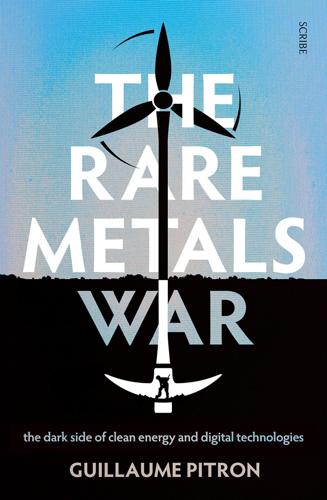
The Rare Metals War
by
Guillaume Pitron
Published 15 Feb 2020
The colossal investments needed to build the downstream industry were delayed, and the country’s trade balance began to teeter as budget shortfalls accumulated. In 2017, the country had no choice but to loosen its strategy by allowing several minerals to be exported again.49 The drop in commodity prices was largely responsible for this setback, as this nationalistic approach was for the most part implemented during a global ‘commodities super cycle’ — fifteen years of plenty that began in 2000, during which market prices skyrocketed. It was a boon for buyer countries, but also put seller countries in a position of force that aroused their nationalist instincts. But the super cycle ended in 2014. The consumer-producer trade power returned to an even keel, and producer countries began to think twice before investing higher up the value chain.

Vertical: The City From Satellites to Bunkers
by
Stephen Graham
Published 8 Nov 2016
In the process, the City unleashes utterly new geo-dynamics that will play out for thousands – and in some cases millions – of years to come’.11 Indeed, such urban geological processes work through generations, drawing precious metals and resources from mines and pits at the ends and depths of the earth to be refined, processed, manufactured, and dug into the city in the form of vast concentrations of subterranean pipes, wires and conduits. Here a stark irony presents itself. World urbanisation and economic growth regularly create spikes in commodity prices as even the frenzied extension of mining (largely in the Global South) fails to meet demand. The so-called ‘commodities super cycle’ between 2000 and 2014 is a powerful example. Thus, as metals become more expensive and valuable, the very manufactured geology under the world’s cities becomes a lucrative ‘mine’ itself. Authorities in Scandinavian cities are already exploring techniques that will allow them to dig into their manufactured ground to pull out the valuable metals within unused, obsolescent or previously forgotten ‘hibernating’ infrastructure – old tram lines, disused district heating pipes, abandoned power and telephone wires, forgotten nineteenth-century gas networks and so on – as resources to sustain contemporary economic development.
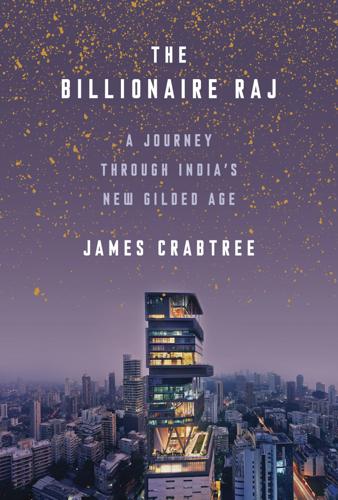
The Billionaire Raj: A Journey Through India's New Gilded Age
by
James Crabtree
Published 2 Jul 2018
“Indians are no longer going to remain subdued and live in a simple fashion…Young Indians want to be like me.”36 But he rose to prominence in a particular moment in Indian history, namely the economic boom of the mid-2000s. In the consumer economy, millions of Indians bought cars, built houses, and took flights for the first time. What was called the global commodity “super-cycle”—driven in particular by rising demand in China for minerals like coal, bauxite, and iron ore—kicked off a dash for natural resources across India too. Stock markets roared ahead, creating a bulging new billionaire class. It is hard to pick an exact date, but at some point between the time of Manmohan Singh’s election victory in 2004 and Mallya’s fiftieth birthday party the following year, something in India changed, and a new gilded age began.